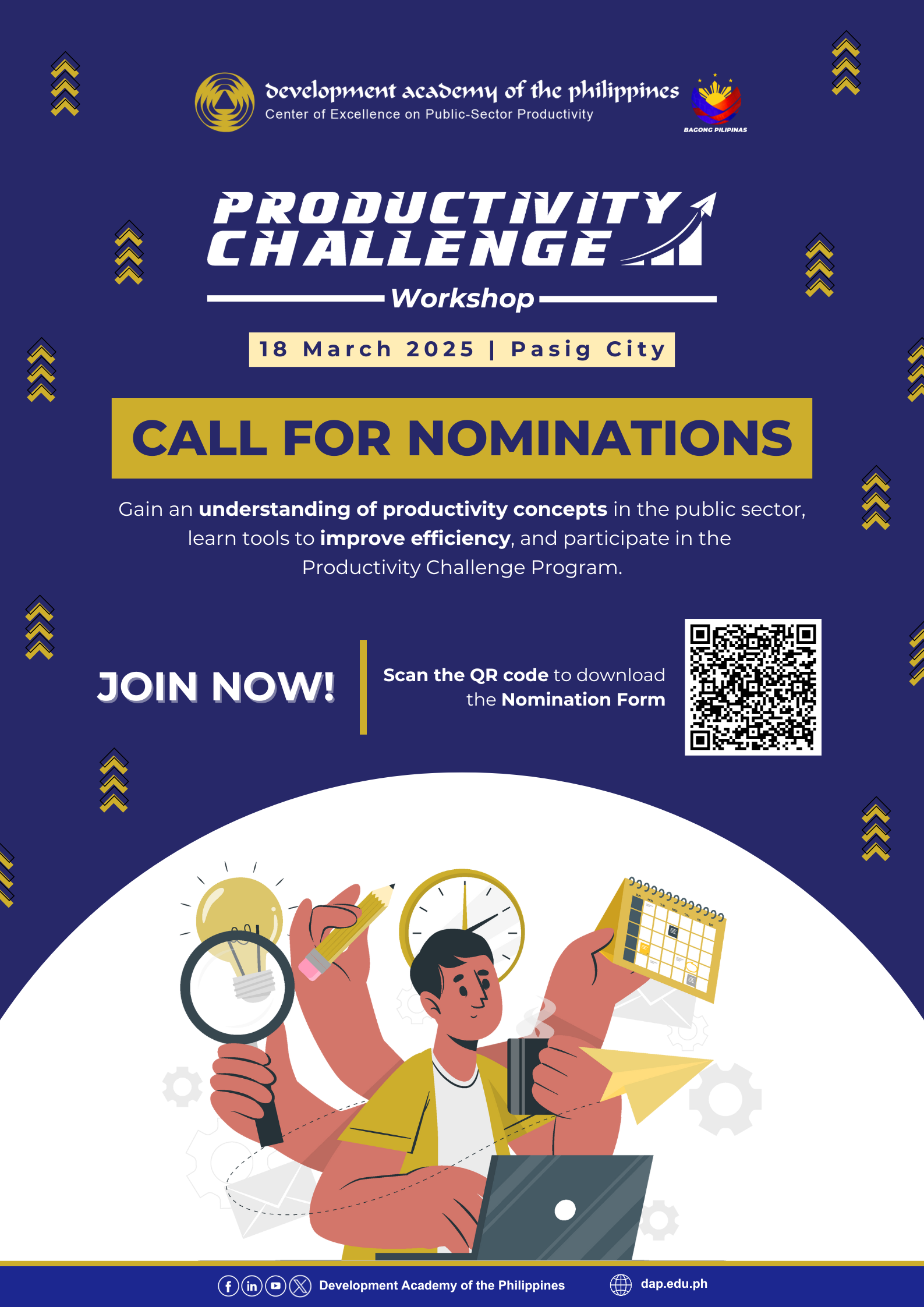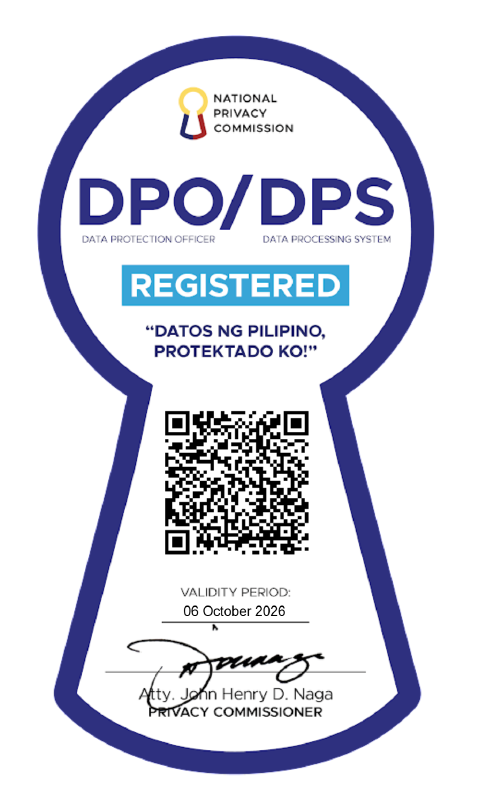The Development Academy of the Philippines (DAP) recently hosted the “Training of Trainers on Productivity Measurement for Public Sector Organizations,” an activity co-sponsored with the Asian Productivity Organization (APO), on June 24 to 28, 2019 at the DAP Building in Pasig City. The training was attended by 28 participants from 12 APO member economies, equipping them with the concepts of and approaches to measuring public-sector productivity and achieving agreement on the appropriate measurements and methods applicable to public services.
The training was facilitated by three resource persons, namely, Ms. Catherine Andersson, assistant commissioner of the Productivity Commission of Australia, Mr. Zaffrulla Bin Hussein, senior manager of Malaysia Productivity Corporation, and Mr. Santiago Gonzalez, lead economist and policy analyst from the Organization of Economic Development. Their resource presentations covered the following topics: productivity and quality concepts applicable to the public sector; measurement and analysis frameworks in Malaysia and in Australia; designing good indicators to achieve statistical quality; equity, effectiveness and efficiency of public services; lessons and challenges in measuring public-sector productivity; and, drivers of public-sector productivity.
Local Presentations on Public-sector Productivity Measurement
Two local presenters were also invited to highlight initiatives or cases in the Philippines related to measuring public-sector productivity.
DAP Senior Vice President Magdalena L. Mendoza articulated on the application of the Philippine government of results-based management through the Results-Based Performance Management System and the Performance-Based Incentive System, which assist national government agencies in enhancing and attaining productivity at individual and organizational levels. The productivity journey of select government agencies was also cited. She further emphasized how incentivizing exemplary performance of government organizations and employees has led to effective service delivery by the public sector.
Mr. Reuel Hermoso, a DAP fellow, presented the research conducted by the DAP in connection with the Government Quality Management Program. The research involved the estimation of productivity levels in the health and education sectors in the Philippines. He also shared the results of the said study and identified important productivity parameters such as effective levels of patient-doctor and bed capacity utilization rates, and making health facilities adequate and accessible to the public in Philippine hospitals. Meanwhile, for policies benefiting the education sector, effective levels of student-teacher and student-classroom ratios should be maintained and education facilities should readily be made accessible to the public.
Governance and Productivity Measurement in Philippine Healthcare
Aside from the classroom lectures, group discussions, and exercises, the participants and the resource persons of the training visited the Philippine Heart Center (PHC), whose implementation of the Performance Governance System (PGS) has enabled the institution to improve its overall productivity.
According to Dr. Gerardo S. Manzo, deputy executive director for medical services, the management of PHC recognized two challenges that they should address, which led them to adopt the PGS. First was to realize the vision of PHC to become a global healthcare destination. Hence, the hospital underwent an accreditation process that fostered change and improvement in its operations and performance. In 2017, it became the first ASEAN public hospital to receive Diamond Accreditation by the Accreditation Canada International for compliance with international and healthcare standards.
The second challenge, said Dr. Manzo, was the need “to be more efficient in the use of scarce resources: to treat more patients at decreased cost.” This motivated the transformation of PHC toward attainment of excellence in areas that include financial, internal business process, customer, and learning and growth, using the Balanced Scorecard as tool. In moving forward, the PHC management commits to focus on their vision and mission and be beyond better until 2022 and to continue to contribute to nation building through the provision and access of quality healthcare. The observational site visit of the participants and resource persons concluded with a tour of the PHC facilities.
On the last day of the five-day training, the participants presented their individual action plans which encapsulated their key learnings from the training, and their proposed activities/projects as trainers or experts on public-sector productivity measurement. These action plans will be forwarded to their respective national productivity organizations for necessary support and progress monitoring.




